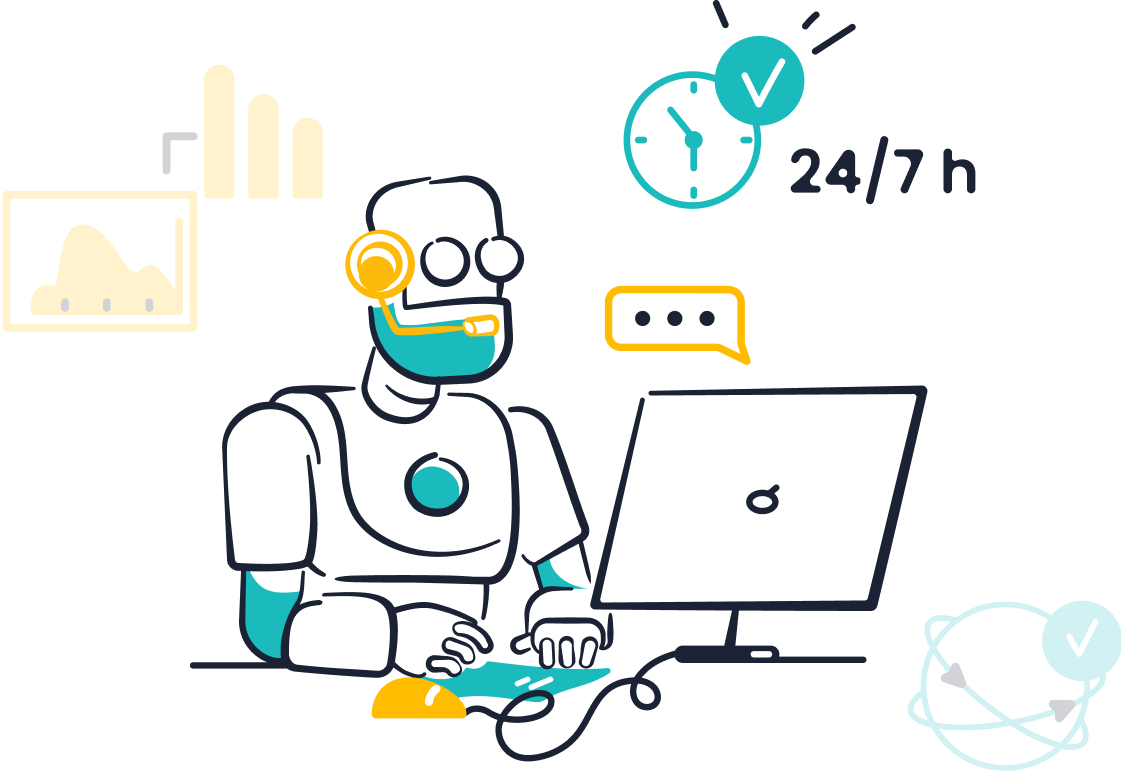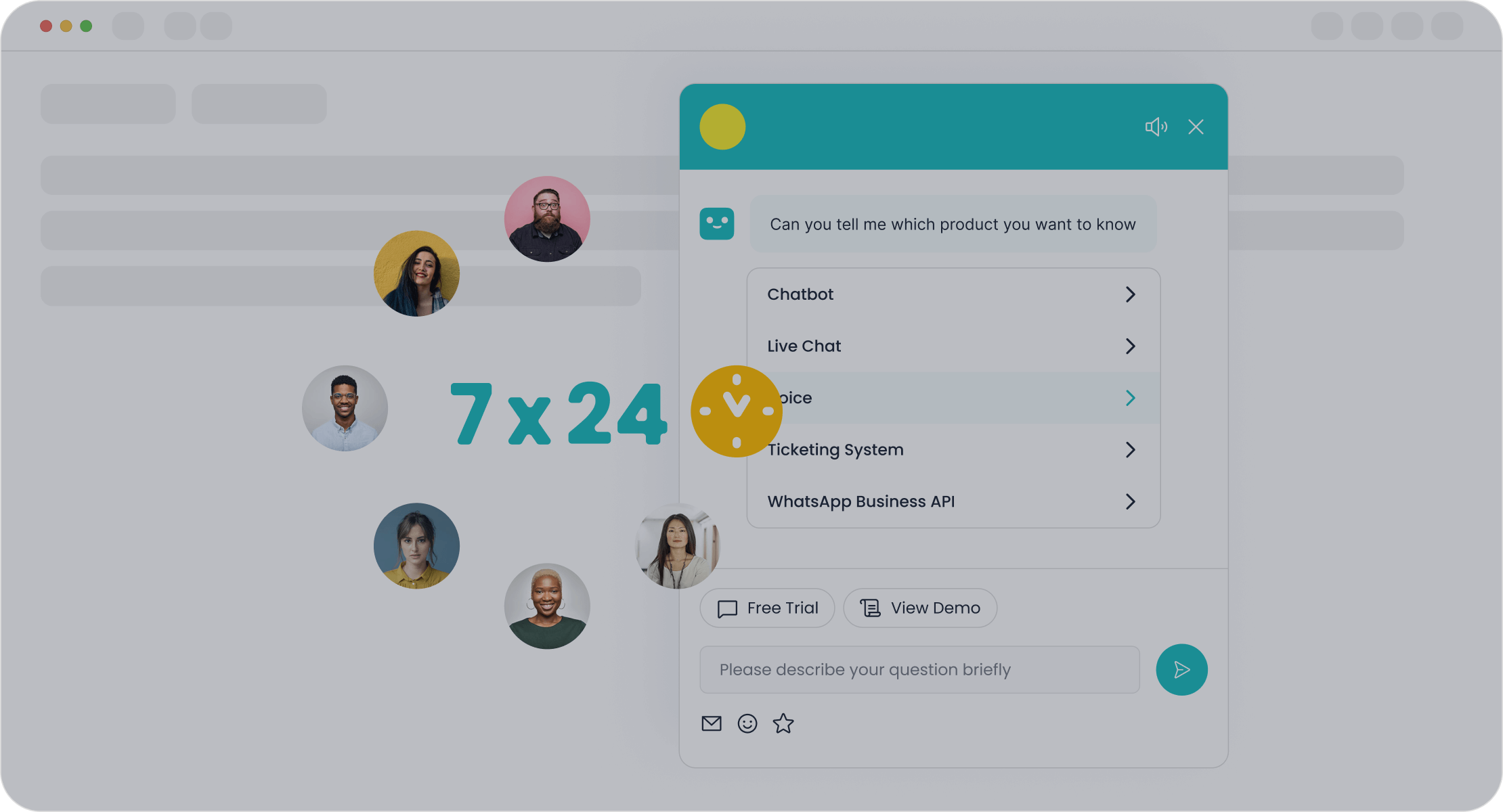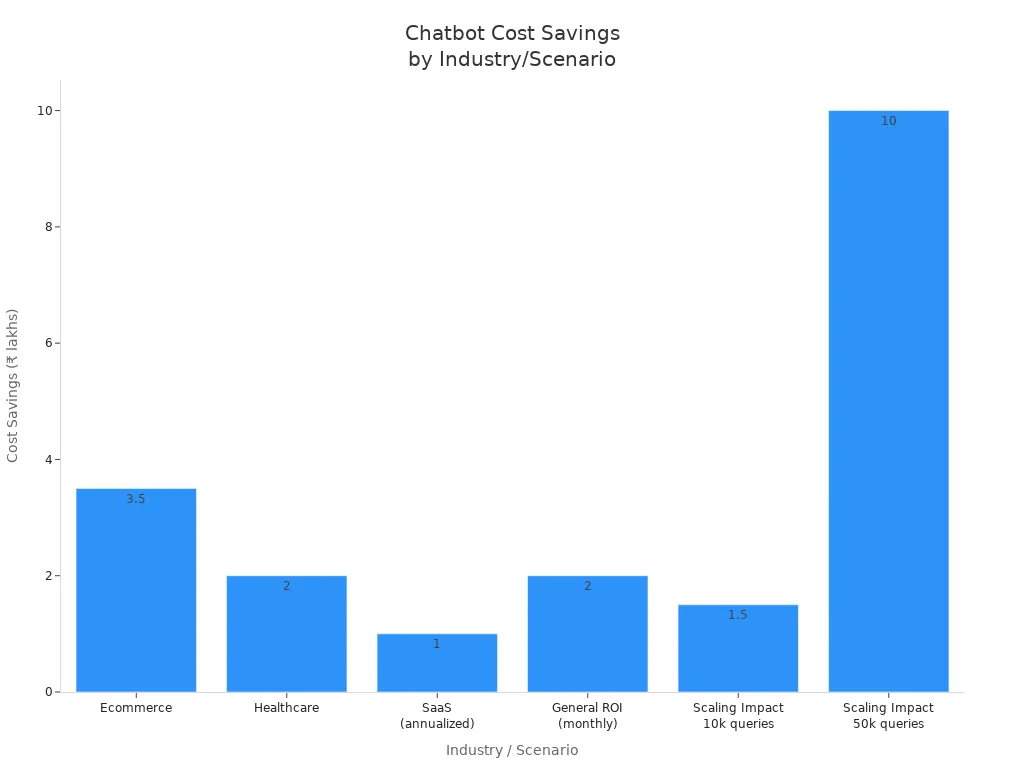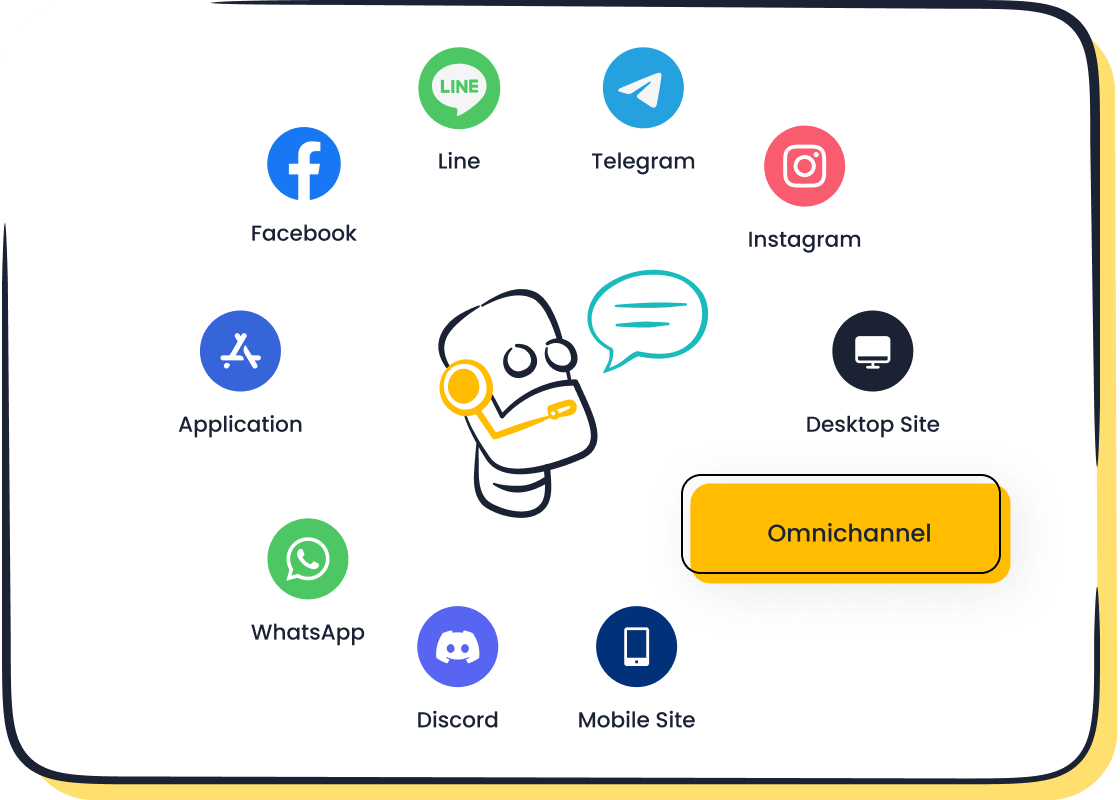Chatbot Advantages and Disadvantages for Businesses Explained

Businesses across industries rely on chatbot technology to enhance customer service, support, and ecommerce. According to Gartner, 80% of companies now use or plan to adopt AI-powered chatbots by 2025 (Gartner source). Sobot AI stands out by delivering efficiency, cost savings, 24/7 support, scalability, actionable data insights, and improved customer experience. Common chatbot advantages and disadvantages include instant availability, lower costs, and multilingual support, but also limited understanding, lack of empathy, technical issues, and setup challenges. Sobot helps businesses balance automation with human touch for optimal customer satisfaction.
Chatbot Advantages and Disadvantages
Efficiency

Businesses today seek ways to improve efficiency in customer service. Conversational AI chatbots, such as Sobot, transform operations by automating routine inquiries and reducing the workload on human agents. This allows staff to focus on complex issues that require human judgment. Sobot’s AI chatbot, for example, leverages advanced natural language processing to provide instant, accurate responses across multiple channels. Companies like OPPO have seen a significant boost in productivity, with Sobot’s solutions reducing call times by 25% and increasing sales by 15%.
The table below compares traditional customer service with conversational AI chatbots:
| Efficiency Aspect | Traditional Customer Service | Conversational AI Chatbots |
|---|---|---|
| Availability | Limited to business hours | 24/7 support available |
| Response Speed | Variable, often slower due to human limitations | Instant or very fast responses reducing wait times |
| Scalability | Requires hiring and training more staff | Easily scalable without additional staffing costs |
| Personalization | Depends on individual agent skills | Uses past interactions and data for tailored experiences |
| Multilingual Support | Difficult and costly to hire multilingual agents | Supports multiple languages seamlessly |
| Cost-Effectiveness | Ongoing expenses for salaries, benefits, training | Lower maintenance and operational costs |
| Data Insights | Limited and inconsistent data collection | Comprehensive data collection for strategy refinement |
| Continuous Learning | Slow to adapt to trends and preferences | Constantly learns and updates to stay relevant |
| Human-Agent Collaboration | Handles both routine and complex tasks | Automates routine tasks, freeing humans for complex issues |
| Consistency Across Channels | Difficult to maintain uniformity | Provides consistent responses across all platforms |
| Instant Information Access | Requires navigation or waiting | Immediate access to information |
| Customer Retention | Effective but less personalized and immediate | Enhances retention with timely, personalized assistance |
Automating routine tasks not only improves efficiency but also leads to higher customer satisfaction and better business outcomes.
Cost Savings
One of the most compelling chatbot advantages and disadvantages relates to cost. AI chatbots deliver significant cost savings by reducing the need for large customer service teams. Sobot’s AI chatbot automates responses to common queries, allowing businesses to save up to 50% on staffing costs, especially during peak seasons. Surveys show that 87.2% of respondents believe chatbots improve cost and time efficiency. In e-commerce, for example, companies have saved ₹3.5 lakhs per month in staffing and overtime, with chatbots handling 70% of daily queries at 95% accuracy.

Sobot’s AI-driven ticket management and workflow automation further streamline operations, helping businesses achieve a rapid return on investment. As query volumes increase, cost savings scale up, making chatbots a strategic asset for growing organizations.
24/7 Support
Chatbots provide around-the-clock support, a key advantage for businesses serving global customers. Sobot’s AI chatbot operates 24/7, offering instant assistance in multiple languages. This ensures that customers receive help at any time, eliminating wait times and improving satisfaction. Companies like Photobucket have reported a 3% increase in customer satisfaction and a 17% faster first resolution time after implementing 24/7 AI chatbots.
Key performance indicators for 24/7 chatbot support include:
| KPI | Description | Relevance to 24/7 Chatbot Support |
|---|---|---|
| Customer Satisfaction Scores (CSAT) | Measures customer satisfaction improvements after chatbot interactions. | |
| Customer Retention | Reflects long-term satisfaction influenced by consistent chatbot availability. | |
| Average Handle Time (AHT) | Chatbots can reduce AHT by providing instant responses 24/7. | |
| Typical Service Levels | Chatbots enhance service levels by offering constant availability. | |
| Maximum Abandon Rate Threshold | Lower abandon rates expected with immediate chatbot responses. |
Sobot’s omnichannel and multilingual capabilities ensure seamless support across chat, email, social media, and voice, making it easier for businesses to meet customer expectations at all hours.
Scalability
Scalability stands out as a major advantage in the list of chatbot advantages and disadvantages. Chatbots handle sudden spikes in customer inquiries during peak times, such as holidays or product launches, without requiring additional staff. Sobot’s AI chatbot integrates live chat, email, social media, and FAQs into a single platform, centralizing customer interactions and enabling real-time management.
Businesses using Sobot have scaled their customer service operations efficiently, automating up to 60% of support tickets and supporting multiple languages, including English, Chinese, Arabic, French, German, and Japanese.
This scalability allows businesses to maintain high service levels during periods of rapid growth or seasonal demand, ensuring consistent customer experiences and reducing the risk of backlogs.
Data Insights
Conversational AI chatbots collect and analyze vast amounts of customer data, providing actionable insights for businesses. Sobot’s AI chatbot leverages generative AI to interpret customer inquiries, sales data, and feedback, helping companies refine marketing strategies, personalize campaigns, and improve products.
| Type of Data Insight | How Chatbots Use These Insights |
|---|---|
| Customer preferences, behaviors, interactions | Inform marketing strategies, personalize campaigns, recommend products, nurture leads |
| Sales data, feedback, internal documents | Identify trends, summarize data, generate reports, support decisions |
| Lead qualification data | Automate lead generation, qualify leads, integrate with CRM, schedule follow-ups |
| Conversational data | Personalize recommendations, improve experience, increase conversions |
| Large business data volumes | Enhance efficiency, answer complex queries, visualize performance |
Sobot’s analytics and reporting tools empower businesses to make data-driven decisions, optimize workflows, and enhance customer engagement. Companies like H&M and Capital One have used chatbot-generated insights to improve customer service and drive business growth.
Customer Experience
Enhancing customer experience remains a top priority for businesses. AI chatbots offer real-time engagement, instant responses, and personalized interactions. Sobot’s AI chatbot delivers consistent, polite, and helpful support across all channels, reducing response times and customer frustration. Self-service portals and intelligent search features empower customers to resolve issues independently, while advanced natural language processing ensures accurate and relevant answers.
- Sobot’s omnichannel support provides seamless experiences across chat, email, social media, and voice.
- Businesses report a 9.4% increase in customer satisfaction and a 43% reduction in human agent workload after deploying AI chatbots.
- 80% of shoppers prefer brands that offer personalized experiences, which Sobot enables by recalling order history and suggesting relevant products.
However, the disadvantages of chatbots in customer experience include the risk of non-customized responses and lack of empathy. Some customers may feel dissatisfied if the chatbot cannot resolve their issue or if the interaction feels impersonal. Regular updates and a hybrid approach, combining chatbots with human agents, help address these challenges and ensure a positive customer journey.
In summary, understanding chatbot advantages and disadvantages helps businesses choose the right solution for their needs. Sobot’s AI chatbot stands out by delivering efficiency, cost savings, 24/7 support, scalability, data insights, and enhanced customer experience, while industry-wide challenges remind businesses to balance automation with the human touch.
AI Chatbot in Customer Service

Automation
Chatbots have transformed customer service by automating routine tasks. Businesses use conversational AI to handle repetitive questions, such as order status or password resets. Sobot’s AI chatbot stands out with its 24/7 operation, multilingual support, and no-code setup. Companies like OPPO have seen measurable improvements after deploying Sobot’s solution. The chatbot integrates with existing systems, providing quick responses and freeing human agents for complex issues.
- Chatbots use AI and machine learning to understand customer intent.
- They deliver immediate answers, reducing average wait times.
- Most customers expect immediate assistance, with 60% defining "immediate" as within 10 minutes (HubSpot).
- A hybrid approach lets chatbots handle simple queries and escalate complex ones to humans.
This automation leads to faster service, higher productivity, and improved customer satisfaction.
Self-Service
Self-service options powered by conversational AI give customers control over their support experience. Sobot’s chatbot enables users to resolve up to 80% of routine questions without waiting for a human agent. This reduces both wait and resolution times.
- Chatbots provide 24/7 availability, ensuring customers get help anytime.
- They analyze customer data to deliver personalized, consistent responses.
- Research from PwC shows nearly 80% of Americans value speed and convenience in customer service (PwC).
- Metrics like CSAT and NPS confirm that AI self-service tools boost customer satisfaction.
Sobot’s conversational AI improves over time, increasing first-contact resolution rates and enhancing the overall customer journey.
Omnichannel Support
Omnichannel support allows chatbots to engage customers across email, SMS, in-app messaging, and social media. Sobot’s AI chatbot integrates all channels into a single platform, ensuring seamless and personalized interactions. This approach increases engagement and loyalty.
Omnichannel conversational AI delivers:
- Real-time, immediate support on any channel.
- Proactive outreach using customer data.
- Consistent experiences that drive retention and conversions.
Gartner reports that omnichannel chatbots can increase customer retention by 10-15% and conversion rates by up to 30%. Sobot’s solution helps businesses scale customer service, reduce agent workload, and provide immediate, high-quality support.
Chatbots in Ecommerce and Contact Centers
Lead Generation
Chatbots play a vital role in lead generation for ecommerce and contact centers. They automate tasks like gathering information and qualifying leads, which helps human agents focus on more complex customer needs. For example, Open Universities Australia doubled its lead qualification rates and achieved a 250% ROI by using generative AI chatbots. Businesses can use chatbots to engage visitors in real time, collect contact details, and understand preferences. This approach supports personalized follow-ups and targeted marketing campaigns. Chatbots also handle appointment scheduling and event registrations, making it easy to capture leads without human intervention. Sobot’s omnichannel chatbot solution integrates with CRM systems, ensuring seamless lead management and effective follow-up.
Sales Boost
Chatbots drive sales growth by providing instant support and personalized recommendations. They engage customers at key moments, answer product questions, and nudge shoppers toward purchases. The following table highlights the impact of chatbots on sales conversion rates in ecommerce:
| Statistic Description | Value/Percentage |
|---|---|
| Annual revenue improvement using conversational chatbots | Up to 25% |
| Customers nudged to buy additional products via chatbot personalization | 28% |
| Conversion rate of users interacting with AI chatbot | 4 times higher than average user conversion rate |
| Sales transactions initiated from bot interactions | 26% |
A study by Glassix found that ecommerce sites using AI chatbots saw a 23% increase in sales conversion rates (source). Sobot’s proactive messaging and real-time assistance help businesses boost conversions and increase average order value.
Customer Retention
Chatbots support customer retention strategies in several ways:
- Enable multi-channel engagement, including social media.
- Provide 24/7 support, reducing missed sales and supporting impulse buying.
- Maintain consistent, personalized interactions to encourage repeat purchases.
- Proactively reduce cart abandonment by engaging customers during checkout.
- Collect valuable data to tailor future interactions.
- Offer multilingual support for diverse audiences.
- Automate routine support, speeding up query resolution.
- Integrate with live agents for complex issues.
Sobot’s AI chatbot helps businesses deliver seamless, personalized experiences that keep customers coming back. By combining automation with human support, companies can improve satisfaction and build long-term loyalty.
Chatbot Limitations for Businesses
Limited Understanding
Many businesses discover that chatbots struggle with complex questions or unique customer needs. Chatbots often rely on a fixed knowledge base and programmed responses. When customers ask something outside these boundaries, the chatbot may give irrelevant or incorrect answers. This can lead to frustration and a loss of trust. Over half of users (53%) consider customer service chatbots ineffective or only somewhat effective. In fact, 59% of users feel annoyed when they must repeat information because the chatbot fails to understand their request. Businesses often need to transfer these cases to human agents, which increases costs and can slow down service.
Tip: Businesses should ensure seamless handoff from chatbot to human agents to maintain customer satisfaction.
Lack of Empathy
Chatbots cannot feel or express emotions like a human. This lack of empathy makes interactions feel robotic and impersonal. Research shows that 60% of consumers prefer waiting for a human representative over using a chatbot, mainly because humans can show understanding and warmth. When customers face stressful or sensitive issues, a chatbot’s inability to respond with empathy can worsen their experience. Studies confirm that users rate chatbots much lower than humans in emotional connection, especially during service failures.
Technical Issues
Technical challenges can affect chatbot performance and reliability. Businesses often face problems such as:
- Data synchronization and integration with existing systems
- Security and compliance risks, including data privacy concerns
- Maintaining conversation context across channels
- Handling increased usage without performance drops
For example, if a chatbot cannot keep track of a conversation or protect sensitive information, it can lead to customer dissatisfaction and even regulatory penalties. Businesses must invest in robust infrastructure and regular monitoring to avoid these pitfalls.
Implementation Challenges
Deploying chatbots presents several hurdles for businesses:
- Removing bias from training data to ensure fair responses
- Designing chatbots that remember past interactions and user goals
- Preventing AI from generating incorrect or misleading answers
- Ensuring data security and compliance with laws like GDPR
- Scaling the system to handle more users as the business grows
A successful chatbot strategy requires careful planning, ongoing training, and a strong partnership between automation and human support. Businesses that balance these elements can maximize the benefits of chatbots while minimizing their limitations.
Balancing Chatbots and Human Agents

When to Use Each
Businesses achieve the best results when they find the right balance between automation and human interaction. Chatbots work well for routine questions, order tracking, and basic troubleshooting. These tasks do not require emotional intelligence or complex problem-solving. Human agents excel when customers face unique issues, show frustration, or need empathy. For example, Sobot’s chatbot can handle high volumes of simple requests 24/7, but it also allows seamless escalation to a live agent when needed. This approach ensures that every customer receives the right level of support at the right time.
Tip: Use chatbots for efficiency and speed, but always provide an easy path to a human agent for complex or sensitive matters.
Best Practices
A smooth transition between chatbot and human agent is essential for excellent customer service. Companies can follow these best practices to ensure a seamless handoff:
- Train both chatbots and agents on handoff procedures.
- Set clear triggers for escalation, such as repeated failures or customer frustration.
- Collect key customer information early and pass it to the agent.
- Share the full chat transcript with the agent to avoid repetition.
- Communicate clearly with the customer during the transition.
- Route the customer to the right department or agent.
- Monitor handoff metrics and update chatbot knowledge regularly.
- Integrate chatbots with CRM and helpdesk systems for context.
Sobot’s platform supports these steps by providing real-time transcript sharing and smart routing, which helps maintain a strong balance between automation and human interaction.
Customer Satisfaction
Combining chatbots with human agents leads to higher customer satisfaction. Hybrid models automate routine tasks, freeing agents to focus on complex and emotional issues. For example, Lyft reduced average customer service resolution times by 87% after integrating AI tools (source). A European telecom company increased its resolution rate from 82% to 88% by using both chatbots and human agents. Customers benefit from fast, 24/7 support and personal attention when needed. This balance between automation and human interaction builds trust and loyalty, making customers more likely to return.
Choosing the Right Chatbot Solution
Business Needs
Every business has unique goals and challenges. Before selecting a chatbot, businesses should identify their main objectives. Some want to reduce support costs, while others focus on improving customer satisfaction or increasing sales. Analyzing customer data helps businesses understand common questions, pain points, and preferences. For example, Sobot’s AI chatbot supports omnichannel engagement, allowing businesses to connect with customers through chat, email, voice, and social media. This flexibility helps businesses meet their specific needs and scale support as they grow.
Tip: Businesses that align chatbot features with their goals see better results and higher returns on investment.
Customer Expectations
Modern customers expect fast, accurate, and personalized service. Studies show that 70% of customers prefer personalized experiences, and 62% have stopped doing business with companies due to poor service (PwC). Businesses should choose a chatbot that can deliver instant responses, remember past interactions, and support multiple languages. Sobot’s AI agent uses advanced language models to provide accurate answers and human-like conversations. The platform also ensures data privacy and compliance, which builds trust with customers. Meeting these expectations helps businesses improve satisfaction and loyalty.
Implementation Steps
A successful chatbot deployment follows clear steps. Sobot’s no-code setup makes the process simple for businesses of any size.
- Analyze customer data to find common behaviors and pain points.
- Train the chatbot using this data for accurate, personalized replies.
- Integrate omnichannel support to reach customers on all platforms.
- Ensure compliance with data privacy laws like GDPR and CCPA.
- Use predictive analytics to identify at-risk customers and trigger retention campaigns.
- Measure the chatbot’s impact on satisfaction and efficiency.
- Regularly update and optimize the chatbot based on performance data.
Sobot’s support team guides businesses through each step, helping them launch quickly and achieve strong results.
Chatbots offer businesses efficiency, cost savings, and 24/7 support. They help improve customer satisfaction and provide valuable data insights. However, some challenges include limited understanding and lack of empathy. Companies like OPPO have seen an 83% chatbot resolution rate using Sobot’s solutions. Businesses should assess their needs, explore Sobot’s AI chatbot, and consider starting with a pilot to see real results. For more information, visit Sobot’s official website.
FAQ
What are the main chatbot advantages and disadvantages for businesses?
Businesses benefit from chatbots through efficiency, cost savings, and 24/7 support. Disadvantages include limited understanding and lack of empathy. Sobot’s AI chatbot helps companies automate up to 60% of support tickets, but human agents remain essential for complex issues.
How does Sobot address chatbot advantages and disadvantages in customer service?
Sobot’s AI chatbot improves efficiency by handling routine queries and providing instant responses. It supports multiple languages and channels. For example, OPPO achieved an 83% chatbot resolution rate. Sobot also enables seamless handoff to human agents for more complex needs.
Can chatbots improve customer satisfaction despite their disadvantages?
Yes. Chatbots offer instant support and personalized experiences, which increase satisfaction. Sobot’s omnichannel chatbot reduced agent workload by 43% and improved customer satisfaction by 9.4%. However, businesses must balance automation with human support to address chatbot advantages and disadvantages.
What industries benefit most from chatbot advantages and disadvantages?
Retail, e-commerce, finance, and gaming see the greatest impact. Sobot’s solutions help these industries manage high inquiry volumes, reduce costs, and provide 24/7 support. For example, e-commerce companies use chatbots to lower cart abandonment and boost sales.
How can businesses overcome the disadvantages of chatbots?
Tip: Combine chatbots with human agents for best results.
Businesses should regularly update chatbot knowledge bases, monitor performance, and ensure smooth escalation to agents. Sobot’s platform offers easy optimization and real-time transcript sharing, helping companies maximize chatbot advantages and minimize disadvantages.
See Also
Key Advantages Of Using Chatbots On Websites
Ten Reasons To Integrate Chatbots Into Your Website
Major Benefits Of Incorporating Chatbots Into Websites
